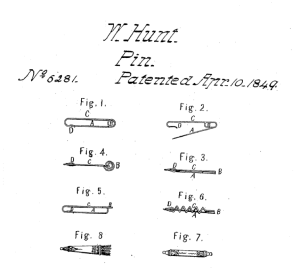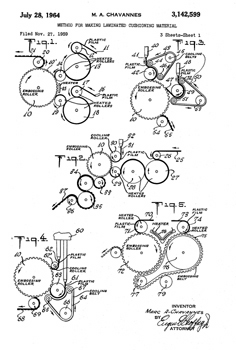 In 1957, Alfred W. Fielding and Marc Chavannes set out to make a new type of wallpaper. Instead, they changed the world of packaging. They were attempting to develop an easy to install and clean wallpaper with a paper backing. The partners sealed two shower curtains together creating a cluster of small bubbles between the two layers. For this invention, they received U.S. Patent No. 3,142,599 on July 28, 1964 for a Method for Making Laminated Cushioning Material.
In 1957, Alfred W. Fielding and Marc Chavannes set out to make a new type of wallpaper. Instead, they changed the world of packaging. They were attempting to develop an easy to install and clean wallpaper with a paper backing. The partners sealed two shower curtains together creating a cluster of small bubbles between the two layers. For this invention, they received U.S. Patent No. 3,142,599 on July 28, 1964 for a Method for Making Laminated Cushioning Material.
The product was unsuccessful as wallpaper. Looking for other ways to use the plastic, the duo even tried to sell it as greenhouse insulation. The use of the air cushioned material as protective packaging was discovered later. Continue reading “Shower Curtain Packing Material? Invention of Bubble Wrap”


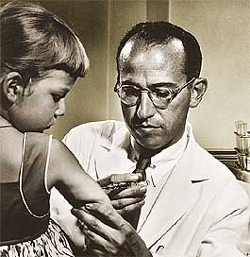 Polio was once a disease feared each summer by parents and children living in cities throughout the world. Epidemics of the disease were reported during the summer season starting in 1910. The polio epidemic of the summer of 1952 was the worst in the history of the United States. About fifty-eight thousand cases were reported with 3,145 deaths and 21,269 children left with some level of paralysis. Luckily, research was being done to develop a vaccine for this children’s illness.
Polio was once a disease feared each summer by parents and children living in cities throughout the world. Epidemics of the disease were reported during the summer season starting in 1910. The polio epidemic of the summer of 1952 was the worst in the history of the United States. About fifty-eight thousand cases were reported with 3,145 deaths and 21,269 children left with some level of paralysis. Luckily, research was being done to develop a vaccine for this children’s illness.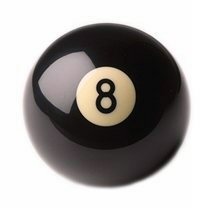 The first thermoplastic was exhibited in 1862 at the London International Exhibition. Parkesine was invented in 1855 in London by Alexander Parkes. Parkesine was an organic material made by dissolving cellulose nitrate in solvent. The material could supposedly do everything that rubber could do only it was cheaper. In 1866, Parkes formed the Parkesine Company to produce his plastic. It was not a commercial success though because it was expensive, easily cracked and highly flammable.
The first thermoplastic was exhibited in 1862 at the London International Exhibition. Parkesine was invented in 1855 in London by Alexander Parkes. Parkesine was an organic material made by dissolving cellulose nitrate in solvent. The material could supposedly do everything that rubber could do only it was cheaper. In 1866, Parkes formed the Parkesine Company to produce his plastic. It was not a commercial success though because it was expensive, easily cracked and highly flammable.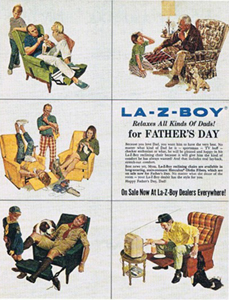 On March 24, 1927, two cousins, Edward Knabusch and Edwin Shoemaker, left their steady, secure employment to start a furniture company. Knabusch was a woodworker and Shoemaker was a farmer. Shoemaker became interested in woodworking after learning about all of tools Knabusch used. They began building furniture in Knabusch’s father’s garage for their new company, the Kna-Shoe Manufacturing Company. With Shoemaker’s building talent and Knabusch marketing skills, the company began to grow.
On March 24, 1927, two cousins, Edward Knabusch and Edwin Shoemaker, left their steady, secure employment to start a furniture company. Knabusch was a woodworker and Shoemaker was a farmer. Shoemaker became interested in woodworking after learning about all of tools Knabusch used. They began building furniture in Knabusch’s father’s garage for their new company, the Kna-Shoe Manufacturing Company. With Shoemaker’s building talent and Knabusch marketing skills, the company began to grow.
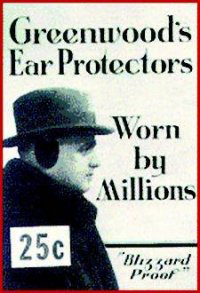 Chester Greenwood was an avid ice skater who lived in bitterly cold Maine. He attempted to keep his ears warm while skating using a scarf. But the bulky and itchy scarf he wrapped around his ears was unsuccessful. He needed to find a better way to stay warm while skating. At the age of 15, he made two circular hoops from wire and asked his grandmother to sew beaver fur and velvet on them. He held his two fur covered loops together with a steel band that created a headband. His new contraption was more much successful in keeping his ears warm.
Chester Greenwood was an avid ice skater who lived in bitterly cold Maine. He attempted to keep his ears warm while skating using a scarf. But the bulky and itchy scarf he wrapped around his ears was unsuccessful. He needed to find a better way to stay warm while skating. At the age of 15, he made two circular hoops from wire and asked his grandmother to sew beaver fur and velvet on them. He held his two fur covered loops together with a steel band that created a headband. His new contraption was more much successful in keeping his ears warm.